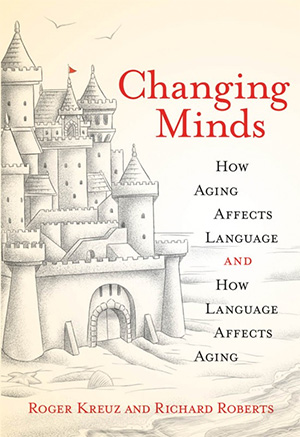‘I’ve Lost My Identity’: On the Mysteries of Foreign Accent Syndrome

On September 6, 1941, the German-occupied city of Oslo was attacked by the British Royal Air Force. The frightened citizens caught in the open frantically sought refuge from the falling bombs. One of the casualties of the air raid was a 30-year-old woman named Astrid, who was hit by shrapnel as she ran toward a shelter. She was seriously wounded on the left side of her head. Hospital staff feared she would not survive. After a few days, however, she regained consciousness and was found to have paralysis on the right side of her body. She was also unable to speak.

Over time her paralysis receded, and she gradually recovered her ability to talk. Her speech, however, had changed, and people who heard her detected a pronounced German-like accent. This was a serious problem in Norway, where the military occupation had created intense antipathy toward anything German, and her speech caused shopkeepers to refuse to assist her. Clearly she had no desire to speak as she did. Even more mysteriously, she had never lived outside Norway, nor had she interacted with foreigners.
Two years after her injury, Astrid’s strange case came to the attention of Georg Herman Monrad-Krohn. He was a professor of neurology at the University of Oslo and had a particular interest in language disorders. He was also struck by Astrid’s distinctly foreign accent and initially thought that she must be German or French.
Astrid’s case is not unique: An occurrence of what is now called foreign accent syndrome (FAS) was described as early as 1907 by Pierre Marie in France, where a Parisian had acquired an “Alsatian” accent. Over the next century, physicians and language researchers reported dozens of similar cases. As the case studies piled up in the medical journals, scholars struggled to understand what was going on. (FAS has also happened to at least one well-known person today: In 2011 the British singer George Michael, who grew up in London, came out of a three-week coma and initially spoke with a West Country accent.)
A common element is that the prosody — the rhythm, pitch, or intonation — of their language production has changed in some way.
A shared element in many FAS cases involves injury to specific areas of the left hemisphere of the brain. In most individuals, language functions are localized in this hemisphere, which controls the right side of the body (this is why most individuals write with their right hand). Brain injury is rarely selective, and in two-thirds of the FAS cases that have been studied, such individuals have some other language deficit, such as aphasia or apraxia (a motor planning problem).
This was the case for Astrid as well. However, in a small number of cases, the syndrome seems to have been caused by a psychological disorder rather than physical damage to the brain. In some of these cases, the foreign accent seems to have faded away as the underlying condition, such as conversion disorder or schizophrenia, was treated successfully. In other cases, however, the foreign accent persisted.
What is it that makes individuals suffering from FAS sound like foreign speakers of their native language? A common element is that the prosody of their language production has changed in some way. Prosody refers to the rhythm, pitch, and intonation of a language as it is spoken. In a language like English, flat intonation is used for statements of fact (“I owe you twenty dollars”), whereas questions are accompanied by rising intonation (“I owe you twenty dollars?”). Languages differ in their prosodic contours, and so any disruption of normal rhythm and flow might be perceived as non-native or foreign-sounding.
For Astrid, the brain injury caused by the shrapnel wound led to prosodic changes in how she spoke her native language. For example, she tended to raise the pitch on the last word of short sentences. (In English, this phenomenon goes by various names, one of which is “upspeak.” It is associated with the speech of younger women in Britain and the United States.) In addition, whereas Norwegian has fixed pitch on syllables that receive stress, languages like German have a less-consistent relation between pitch and stress. In German, because of this variable pitch, the word that receives the stress depends on the intonation pattern of the sentence. Another characteristic of Astrid’s talk after her injury is important as well: Her speech was not always entirely grammatical.
When all these features are combined, it becomes easier to understand how other Norwegians might have perceived Astrid’s speech as foreign sounding. The relatively subtle prosodic and grammatical errors that she made would be consistent with someone who had learned Norwegian as a second language. Recall that Monrad-Krohn initially thought that Astrid might be a native speaker of German or French. This probably reflects the fact that the nonnative speakers of Norwegian whom he and others encountered hailed from nearby, populous European countries — like Germany and France.
The subjective nature of how we perceive others’ accents is exemplified by the case of Linda Walker, a 60-year-old British woman from Newcastle who suffered a stroke in 2006. Her sister-in-law asserted that, after regaining consciousness in the hospital, Linda sounded Italian. Her brother, on the other hand, claimed that her speech resembled someone from Slovakia. Others thought they detected a French Canadian or even a Jamaican lilt to her speech. In cases like this, even small changes in the way vowels are pronounced seem to drive major differences in how speech is perceived.
Such variability has been demonstrated in the laboratory as well. Experiments in which participants heard recordings of FAS speakers, as well as a control group of native speakers, also showed a great deal of inconsistency with regard to accent attribution. For example, a Scottish FAS speaker was correctly perceived by some participants to be Scottish, but by others to be Irish, Welsh, English, or even Spanish, German, Portuguese, and Polish. In contrast, the control Scottish speaker was always identified as a native speaker of some variety of English (Scottish, English, Irish, or American).
An American woman with FAS, who sounded British to her Midwestern neighbors, went so far as to travel to England “in search of someone who sounded like me.”
Clearly, many of the study participants heard something that didn’t sound quite right, but they didn’t agree about what that “something” actually was. In a similar study, participants were able to reliably distinguish between native and foreign speakers but perceived FAS speakers as existing in some sort of linguistic netherworld: clearly not native, but not totally foreign either.
Perhaps not surprisingly, therefore, people afflicted with FAS often feel that their sense of self has been undermined. Linda Walker, for example, said, “I’ve lost my identity, because I never talked like this before. I’m a very different person and it’s strange and I don’t like it.” An American woman with FAS, who sounded British to her Midwestern neighbors, went so far as to travel to England “in search of someone who sounded like me.” People in England, however, thought that she sounded South African! As these examples make clear, our self-concept is intimately tied up with how we speak and how we sound to others.
Roger Kreuz is Associate Dean and Director of Graduate Studies in the College of Arts and Sciences and Professor of Psychology at the University of Memphis.
Richard Roberts is a Foreign Service Officer currently serving as the Public Affairs Officer at the US Consulate General in Okinawa, Japan.
Kreuz and Roberts are the co-authors of several books on language and communication, including “Changing Minds: How Aging Affects Language and How Language Affects Aging,” from which this article is excerpted.



